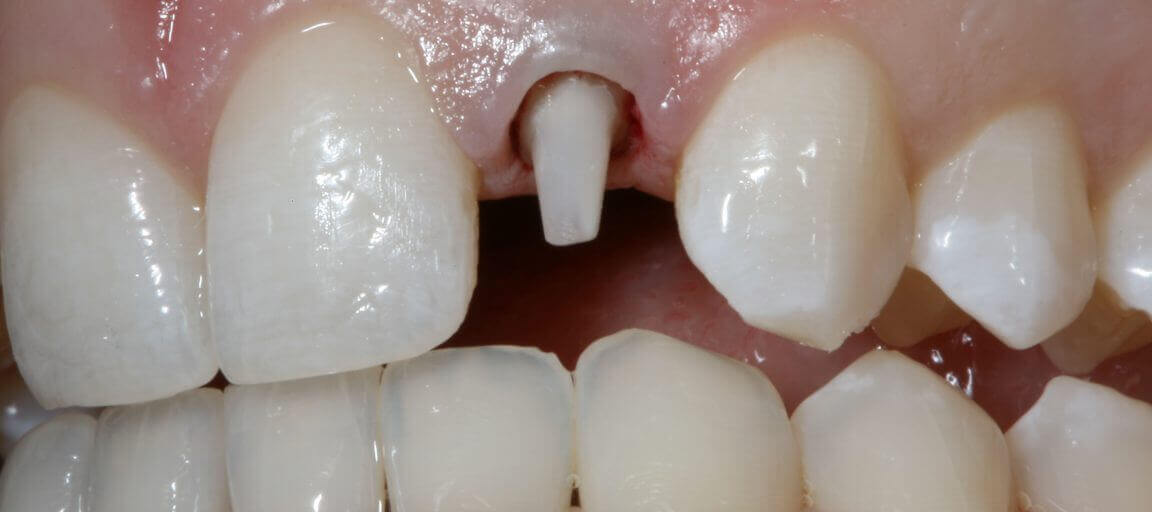
Understanding Tooth Ferrule
Ferrule is a critical factor in being able to plan the prosthodontic phase of treatment for an anterior tooth that has had endodontic therapy. It is also an ingredient in predicting the longevity of the tooth and restoration. Yet, given this level of importance, it is often misunderstood and overlooked.
What is tooth ferrule?
Ferrule is the amount of natural tooth structure we have left on an anterior tooth on which we are going to do a post-core and crown. Knowing the amount is integral to knowing how we are going to seat the crown and it gives us ballpark information about the longevity of that restoration. We look at the natural tooth structure of the tooth on the buccal and the lingual.
The amounts of the natural tooth that are left on the mesial and distal don’t matter. We don’t measure them. They don’t help us at all with retention and longevity.
On the buccal and lingual, we look at the height of the natural tooth structure, measuring from the margin of the crown prep up to where the core starts. We also look at the thickness of that natural tooth structure, measuring from the outside surface of the crown prep to the inner surface where the post space begins. We measure the height and thickness, both buccal and lingual. We then use the smallest number. If we have less tooth structure on the lingual, then the ferrule is determined on the lingual. If we have less thickness than we have height, then the ferrule is determined by the thickness.
Wherever the place is where we have the least natural tooth structure, that now becomes the ferrule we use when we start to think about how we are going to treat this natural anterior tooth.
How does ferrule impact restorative decisions?
The amount of ferrule impacts restorative decisions such as:
- Bonding versus cementing the post
- Bonding versus cementing the crown
- Doing a post at all
- Predicting longevity after restoration
Guidance for these decisions has been formed from substantial research published by the University of Washington School of Dentistry in Seattle that looks at the longevity of the post-core based on the amount of ferrule and whether we bond or cement.
If we have minimum ferrule (1.0 to 2.0 mm) and we want to get the maximum longevity for the anterior restoration, we should bond the post-core and then bond the crown with a dual-cure resin bond system that adds strength to the restorative material, like NX3 Nexus™ Dual Cure from Kerr, Multilink® Automix from Ivoclar Vivadent, or G-CEM LinkForce® from GC America. There are lots of choices of systems you can use, but we need to etch, prime, and bond for high bond strength. We need to keep in mind that even though we are increasing the longevity of the restoration by bonding, the restoration on minimal ferrule will not last as long as a restoration on a greater amount of ferrule.
If we have 2.0 to 3.0 mm of ferrule, we can choose whether to bond the post-core and cement the crown or to cement the post-core and bond the crown to get the same longevity as the tooth with 1.0 to 2.0 mm of ferrule treated by bonding both the post-core and crown. When we have 2.0 to 3.0 mm of ferrule, we can increase the longevity of the restoration even more if we bond both the post-core and crown.
If we have greater than 3.0 mm ferrule, we can cement both pieces without affecting longevity.
If we have 4.0 mm or greater of ferrule, the question becomes whether we need to do a post-core on this tooth or do a fully bonded restoration.
Key Points to Remember
- The amount of ferrule we have has a strong impact on the longevity of the restoration.
- We can increase the longevity when we have less ferrule by bonding both pieces, the post-core, and the crown.
- When we have very little ferrule, we need to understand that we have a reduced longevity for the post-core restoration, even in the face of bonding.
- The amount of ferrule is one of the strongest indicators of how long an anterior crown will last, as well as whether we have bonded or cemented. How long a crown will last involves additional factors I will discuss in another blog, How Long Do Crowns Last?
Related Course
E2: Occlusal Appliances & Equilibration
DATE: February 1 2026 @ 8:00 am - February 5 2026 @ 2:30 pmLocation: The Pankey Institute
CE HOURS: 44
Dentist Tuition: $ 7500
Single Occupancy with Ensuite Private Bath (per night): $ 355
What if you had one tool that increased comprehensive case acceptance, managed patients with moderate to high functional risk, verified centric relation and treated signs and symptoms of TMD? Appliance…
Learn More>






